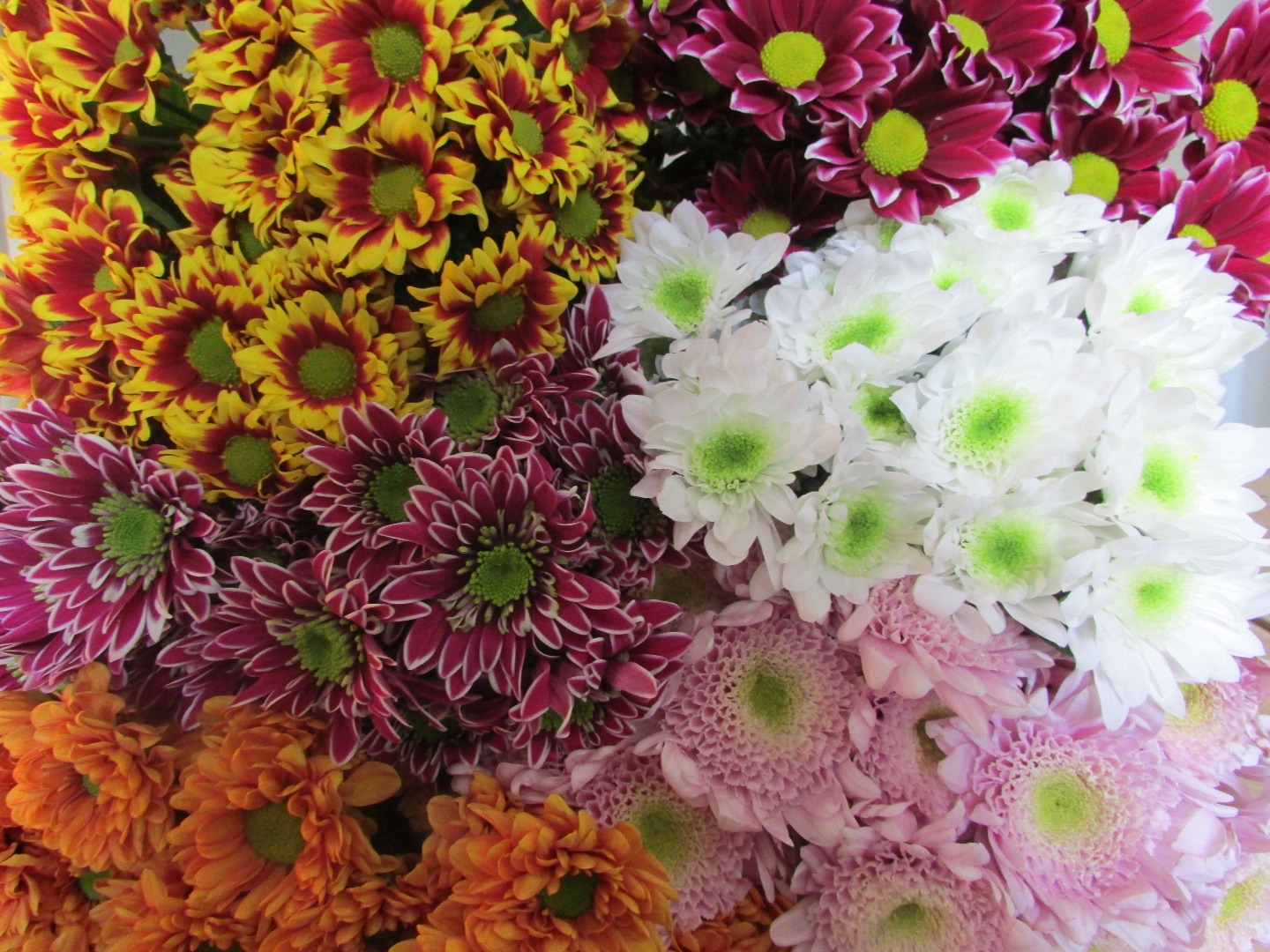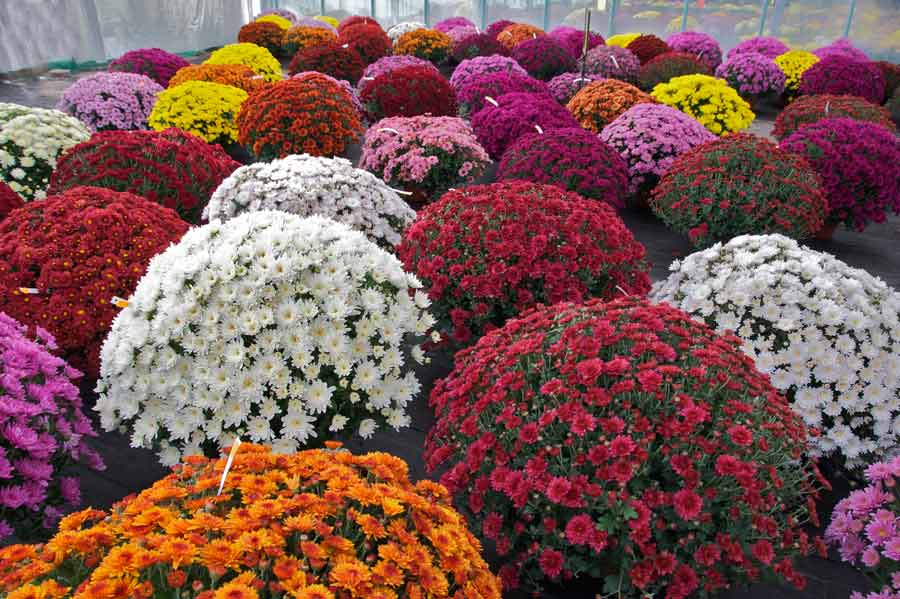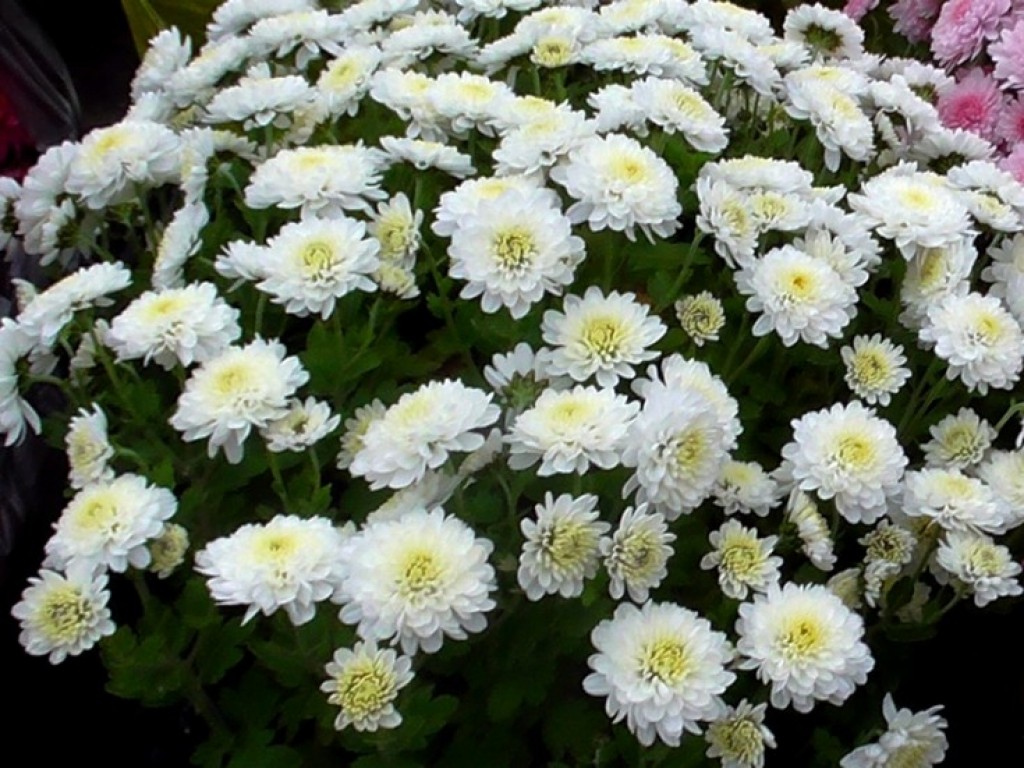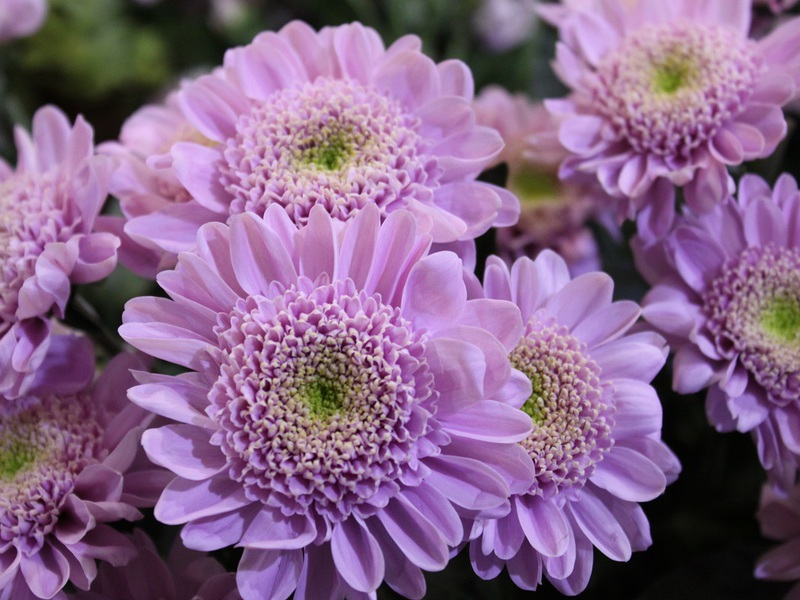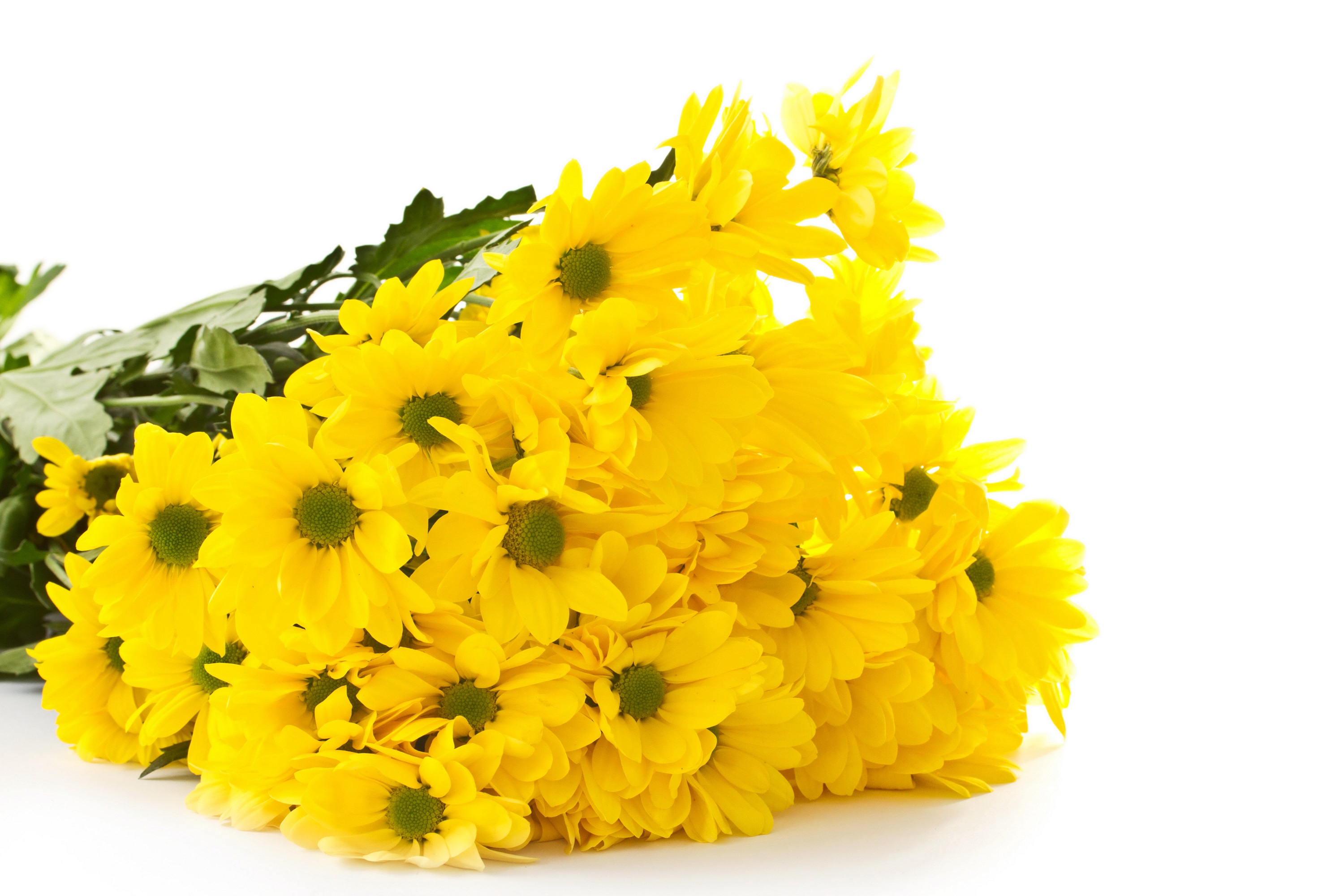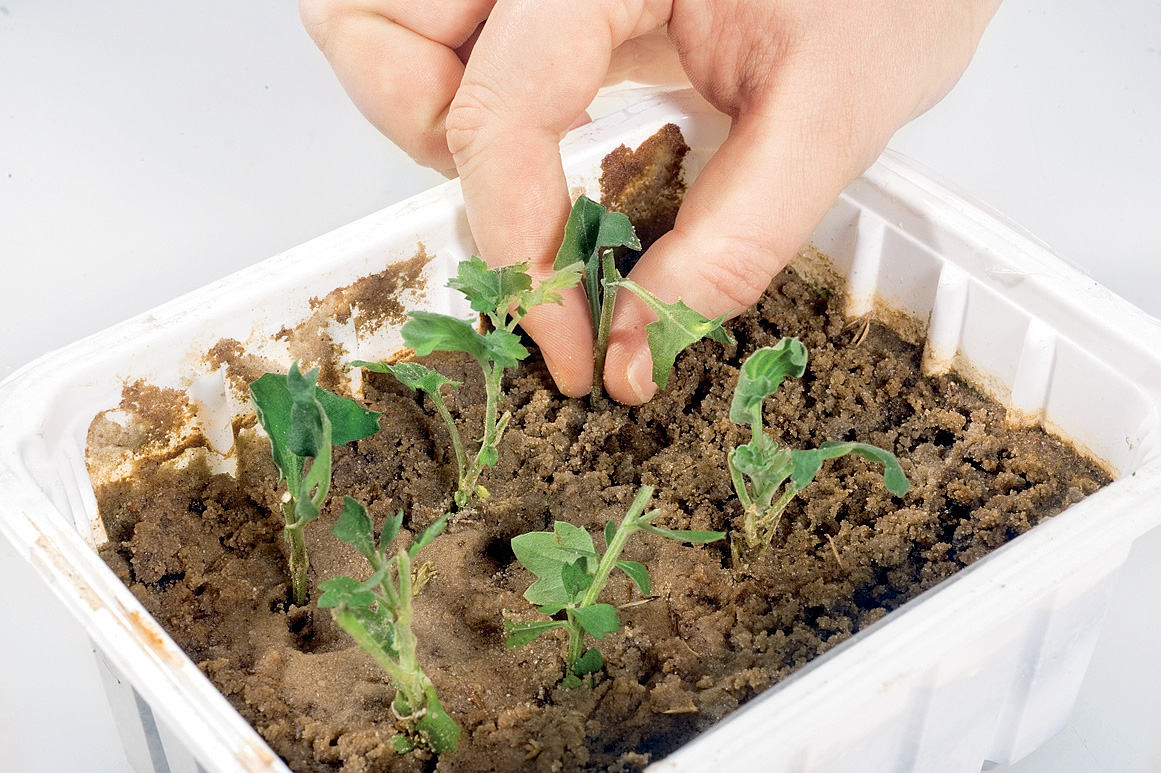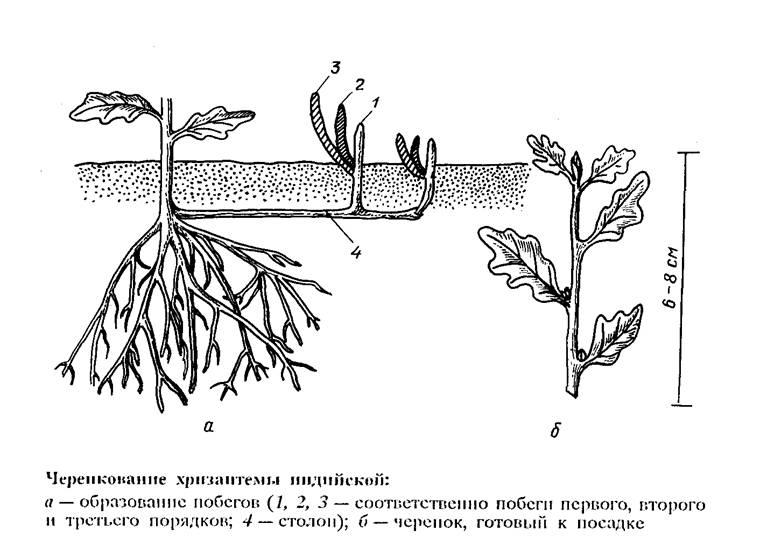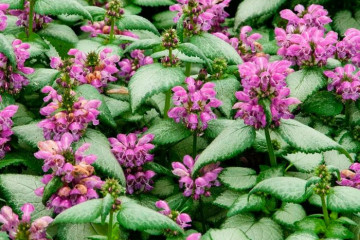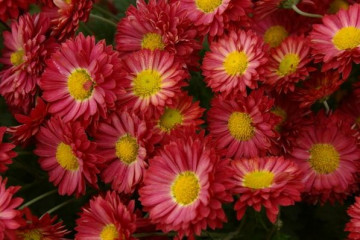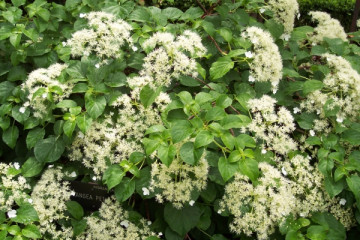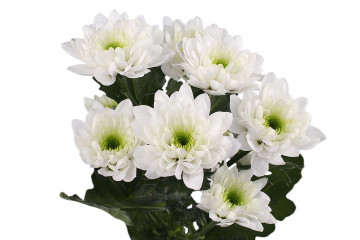Chrysanthemum bush - types, planting and care
Content:
Bush chrysanthemum is a real decoration of most household plots. Infinitely different: dwarf, peony, in the shape of a ball or in the form of a tall bush, border or creeping, purple, pink and even green - all this is about the pacifying queen of the autumn garden and the princess of bouquets. However, in order to preserve the decorative attractiveness of the culture, it is necessary to select the right varieties, taking into account the climate and the place of cultivation, to follow the rules for planting and caring for a flower in the open field or in a pot.
Origin and appearance
In Japan, September 9 is considered the day of chrysanthemum. The history of the plant is already one and a half thousand years old. Nine in the Eastern tradition is a lucky number. Chrysanthemum is a symbol of longevity, so the holiday is quite justified.
The origin of culture is shrouded in legends and traditions. Once an evil dragon wanted to steal the sun, but the attempt failed - he burned his paws. Solar sparks from the furious fury of the beast, trying to break the disc of fire, fell to the ground and turned into pure white flowers.
The place where culture was born is considered to be the East - Japan. There the sun is called "kiku", like a colorful flower.
Outwardly, these are delicate, graceful and radiant flowers. Some of their species are close to chamomiles, most to asters and even peonies. Rising on short or long stems, they bloom large-scale leaves and cover the territory with a pleasant light aroma.
The flowers of culture create different ideas about themselves. The first mention of them dates back to 551 BC. when describing the imperial garden.
The form is:
- Miniature (chamomile varieties),
- Giant,
- Elongated,
- Dissected.
Some botanists are debating which family the culture belongs to. Mysterious flowers are considered the reasons for the disputes. Some, in view of this, attribute chrysanthemums to the tansy family, others even equate them with yarrow.
Some varieties have simple, semi-double “chamomile” flowers, while others have thick, “needle-like” wide petals of inflorescences. The diameter ranges from 3 to 7 cm.
Description of species and varieties
Perennial garden chrysanthemums are represented by numerous varieties of species. Each of them differs in its flowering period, height and width of the bush. Such flowers are very fond of using in landscape design, because the culture blooms for a long time, having a rich and colorful shade of inflorescences. They can also be planted on balconies and terraces.
Plant care is simple: good and stable watering, the presence of a sunny color. The life of flowers directly depends on the abundance of the sun, therefore, when choosing a place for planting, you should not forget about this feature.
Popular varieties have been bred by Chinese, Korean, Indian, Dutch and Japanese experts. The names of the varieties often correspond to the shape of the flower, color and characteristics of life.
Types of shrub chrysanthemums:
- Multiflora. Refers to spherical chrysanthemums,
- One of the rarest species of chrysanthemum is green bush,
- Zembla (Baltica) - white beauty,
- Mona Lisa. Similar in appearance to the maiden chrysanthemum variety. Possesses small but lush flowers,
- Alice is a kind of low-growing chrysanthemums,
- Saba,
- Bacardi.
Shrub chrysanthemum strongly branched, with an abundance of stems and branches, inflorescences in the form of baskets. This is the advantage of this culture - it is enough to cut one branch, and you get a full-fledged bouquet.
Spherical
Chrysanthemum globular is also popularly called Multiflora. This hybrid was bred relatively recently, calling the "ball" shape because of the bizarre type of culture.
This is a low-growing perennial chrysanthemum due to a shrub that reaches a maximum of 50 cm in height.
An interesting fact is that you do not need to cut the flower to give it an extraordinary shape. Everything happens naturally after flowering begins.
Planting and caring for a spherical chrysanthemum will not be difficult even for beginners. After planting, the culture must be pinched, the growth point removed. After 20 days, perform a second pinching. When choosing a soil, pay attention to fertile species with humus and compost, constantly loosen it. Choose a well-lit place for planting, which will contribute to the long flowering of the flower.
White terry bush
Chrysanthemum white bush is popular among florists. It is distinguished by an abundance of varieties and is cut for a long time.
White varieties are:
- Spherical ("White Swan", "White Poodle"),
- Medium-sized ("Coconut", "Sky"),
- Tall and large-flowered ("Chik", "Himalayas").
- Curb creeping ("Bride's Dress", "Bonita").
Burgundy
In Holland, they are proud of the cultivation of burgundy chrysanthemums; it was especially widespread here. The plant stands out for its large inflorescences and lush foliage on strong stems.
After cutting, the beauty pleases the eye for about two weeks, it can stand for about a month, if conditions are created for this.
The cherry queen is often used in bouquets to create spectacular compositions.
Optimist
The chrysanthemum Optimist has large inflorescences, with a white or pale pink tint. The optimist is considered an anemic species. The height of the bush reaches 60-80 cm.
Yellow bush
Chrysanthemum yellow bush is distinguished among all representatives of the family and is called "golden-colored". It is she who is the first specimen of the "chrysanthemum" species.
Yellow succulent flowers often cover landscaping areas. Many varieties of yellow chrysanthemum surprise with colorful inflorescences: from golden yellow to orange-copper. The culture blooms until late autumn, until the onset of frost.
Varieties of low-growing perennial chrysanthemums
Chrysanthemum flowers of a perennial bush undersized are distinguished by their diminutiveness, grace and flirtatious beauty. There are a huge variety of varieties. Some of them, the most popular in everyday life:
- "Mascot". It blooms early, covered with beet-colored inflorescences.
- "Snow White". Spherical shrub, flowers up to 5 cm in diameter, white in color.
- "Ausma". The flowers are yellow-orange.
- "Smile". Incredibly attractive shrub, tube-shaped petals near the inflorescence, lilac color.
- "Barbie". The name speaks for itself: “needle-like” inflorescences are not as simple as the heart of a cold doll. The delicate pink tint of the petals reflects softness and kindness.
- "Alexandrite". Flowers in the form of daisies, but with a yellow-pink core.
Open ground transplant
The growth and development of a beautiful perennial crop largely depends on the correct choice of a suitable growing place and soil.
What is needed for landing
A good seat and well-chosen ground are the main helpers before landing. The soil should be loose and fertile. The culture does not like acidic soil, therefore it is necessary to choose slightly acidic or alkaline (neutral). Loamy soil and sandy loam can also be options. With sandy soil, they dig it up before planting, adding humus and compost.
Optimal location
The best option is a place where there is constant sunlight. Culture is afraid of drafts, but stagnant air also oppresses it. Therefore, the landing site should be as ventilated as possible.
The best places would be:
- Hills,
- Hills,
- Slopes.
Step-by-step planting process
Scheme:
- Prepare a hole for planting up to 40 cm deep.
- Drain if necessary.
- Put a bush in the hole, spread the roots.
- Compact well so that the rhizomes touch the ground.
- Cut the shrub by a third for root engraftment.
- Water abundantly.
- Carry out mulching with peat or humus.
Reproduction
Perennial garden bush chrysanthemum in the Moscow region can be grown:
- With the help of seeds
- By dividing the bush,
- By cuttings.
Additional Information. Perennial plant species often reproduce by dividing the bush. Then you should only transplant the baby from the mother. The transplanting process is best done at the end of the frost, in the spring. The main bush is dug up, the young are separated and immediately planted in the prepared soil.
Cuttings
The most optimal time for cuttings is autumn, after pruning. 5-8 cm shoots are cut. They are rooted either in a glass of water or in a prepared container with a substrate.
The stalk is covered with polyethylene to create a greenhouse effect. After 2-3 weeks, small roots should appear, then young shoots can be transplanted into separate containers. After disembarkation, the young should be covered for a while, for example, use a canopy for this.
Growing from seeds
Growing from seeds is very easy. First, they are sown for seedlings (in February), at the time of the phase of two petals they dive. After the frost is over, you can plant it in open ground or in a pot. Small shrubs should grow by autumn.
Care
Chrysanthemum requires attention and constant care. It needs to be fed, watered, branches are formed (cut if necessary), transplanted and covered for the winter.
Watering mode
The plant loves water, but there should not be excessive moisture. In the summer, when the buds are forming, you need to water it daily. After the beginning of flowering, watering is reduced.
Top dressing
Top dressing takes place according to the standard scheme:
- In early spring - nitrogen,
- In the summer, during the bud period - phosphorus-potassium,
- In the fall - phosphoric.
Fertilizers can be purchased at specialized stores.
Flowering period
During the flowering period, the chrysanthemum needs a sunny color for a longer retention of flowers. Watering becomes less regular than during bud formation.
Dormant period
When the buds are dry, they should be removed and any dry branches cut off. Then watering is gradually reduced, and the flower is prepared for wintering. It is necessary to create all the conditions for the culture to gain strength for the next season.
Preparing for winter
In October, the soil should be mulched with a layer of peat 10 cm, at the end of autumn - cover the plant with dry leaves, spunbond or spruce branches. Some varieties are transplanted into pots and taken to the basement for the whole winter.
In autumn, in the garden, besides chrysanthemums, as a rule, you will no longer see other colorful flowers. The shrub beauty, as if, is opening its branches with flowers even more and is not going to winter. No wonder the beautiful perennial is called the queen of flowers.
